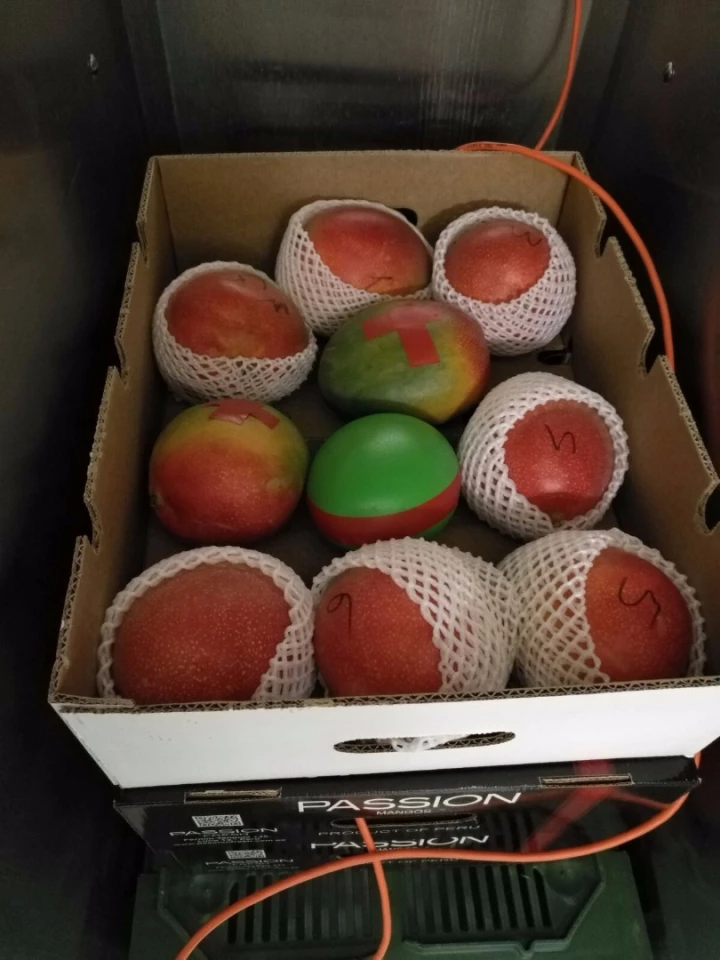When fruit is being transported from the field to the supermarket, it's vitally important that it remain refrigerated – if it isn't kept cold enough, it will spoil before ever reaching consumers. With that in mind, scientists at Switzerland's Empa research institute have developed temperature sensors that could ride along with fruit shipments, replicating the fruit's size, shape and structure.
While there are already temperature sensors in most fruit-shipping containers, these just measure the air temperature within the container, and not in the core of the fruit itself. In order to get that kind of data, workers typically have to open a box, remove a piece of fruit, and stick a temperature probe in it.
Not only does this method destroy that particular piece of fruit, but it can also be inaccurate, as workers are likely going to select fruit from the outside of the stacked boxes – fruit located there is going to be colder than that from deep inside.
By contrast, the Empa sensors are packed in with the fruit, well within the stack.

The inexpensive devices are 3D-printed in the shape and size of the fruit in question, and consist of the electronic sensor itself, along with a mix of water, carbohydrates and polystyrene, combined in a ratio that simulates the internal structure of that type of fruit. So far, sensors have been made that mimic both Braeburn and Jonagold apples, along with Kent mangos, oranges and Cavendish bananas.
In their current form, the sensors essentially serve as data loggers. This means that their data can only be accessed once they're unpacked at the shipment's destination – if the fruit were spoiled by that point, the sensors would indicate at what point in the journey the temperature got too high. Down the road, however, they may be able to wirelessly transmit data, alerting shippers of temperature increases before spoilage occurs.
Source: Empa





